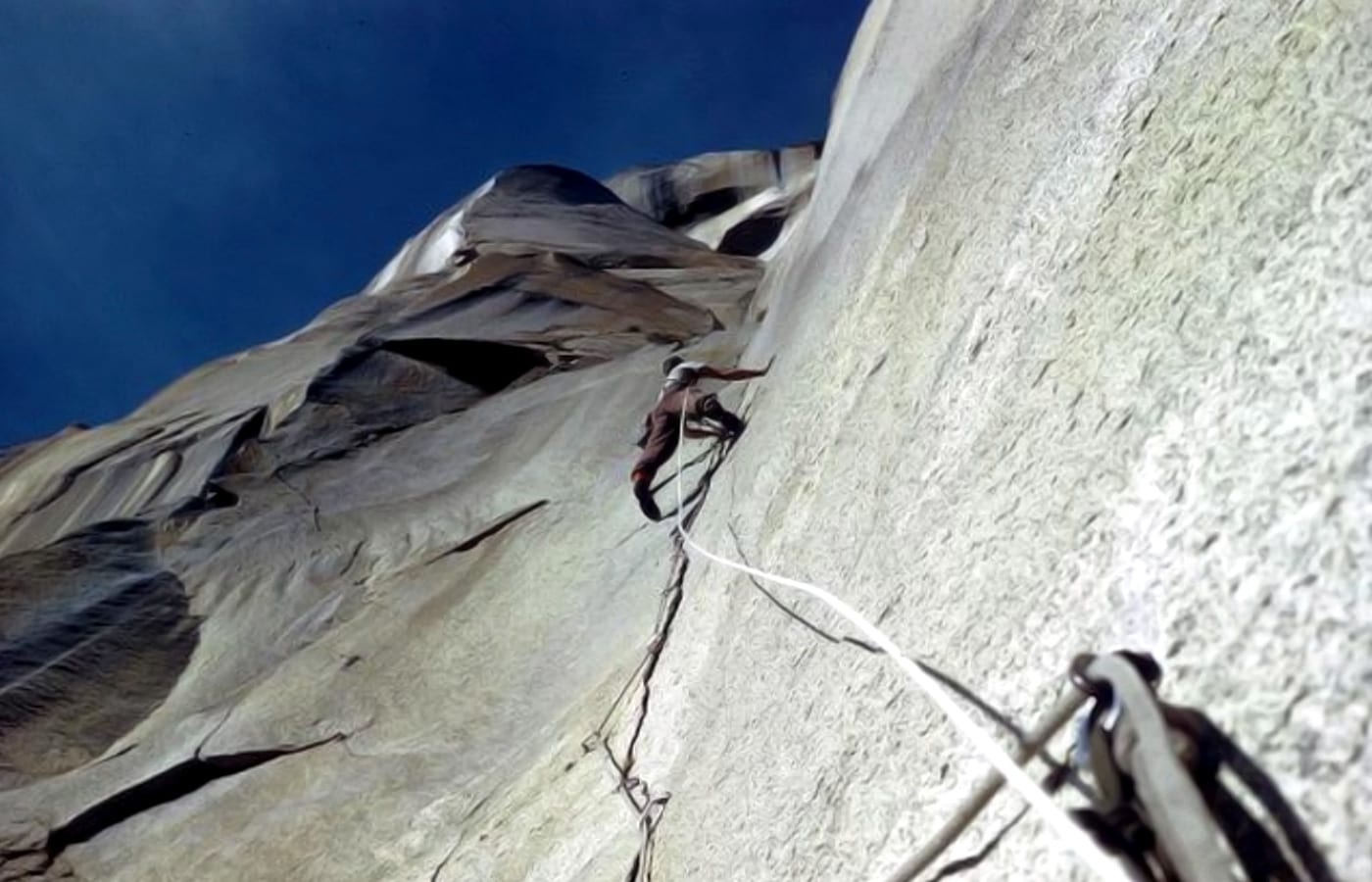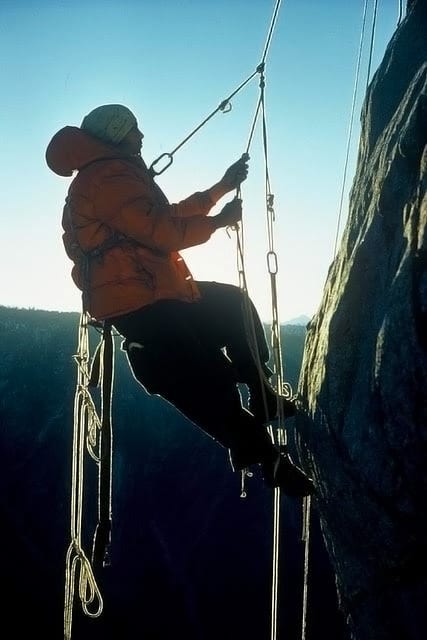Wayne Merry: Climbing First
As day broke on November 12, 1958, Wayne Merry became one of the first rock climbers to reach the summit of Yosemite National Park’s El Capitan from its great South Face.
“Maybe it’s a testosterone thing, but as a climber you want to find your limits,” says Merry, ’59 Conservation. “When the opportunity to climb El Capitan came up, it was the most challenging thing I could possibly attempt.”
The Navy veteran first encountered a scrappy group of climbers in summer 1957, while he was working as a seasonal ranger and naturalist in Yosemite. They made weekend attempts on El Capitan, leaving fixed ropes on the rock for the next weekend. The ropes hung there over the winter. The next summer, he joined climbers Warren Harding, Rich Calderwood and George Whitmore back at the Valley of Light. The Park Service had grown impatient of their exploration, which was attracting spectators who caused traffic jams, and had issued a directive: Complete the ascent by Thanksgiving or “get off the rock.” They also directed that ropes must be fixed the whole way, as there was no one who could rescue them. And the ropes had to be removed afterward, which meant it had to be climbed twice.
With only primitive equipment, the climbers had to be inventive, creating their own tools and relying on soft steel spikes called pitons, pitons improvised from the legs of old stoves, oak wood wedges, hand drills and hardware masonry anchors, which they hammered into the rock precariously into the rock using wood-handled hammers. Some of their equipment came from the hardware store. GoreTex and fleece did not yet exist; neither did climbing helmets, harnesses, good climbing shoes or plastic water bottles. Merry wore Marine Corps climbing boots. They carried water in a gallon paint thinner can and he says that “there was always a hint of hydrocarbons.” The 11-day final push started at Camp IV, up the terrifying Great Roof, beyond a thin sliver of rock called the “Pancake Flake” and into the vertical and overhanging upper face. They fought sleeplessness, dehydration and a two days of snowstorm.
The night of their final climb was long and cold. Fearing that the storm would return, the climbers pushed on through darkness, reaching the summit as day broke.
Merry’s career as a climber, mountaineer and conservationist had just begun. He admired SJSU professors Gordon Edwards, a mountaineer who established an entomology museum at the university, Richard Hartesevelt, who studied the giant sequoia in Yosemite and Kings Canyon National Parks, and plant taxonomist Carl Sharsmith, whose herbarium houses 18,500 specimens, and with whom he worked in Tuolumne Meadows.
Though he worked at various national parks, his tenure as a district ranger at Denali National Park inspired him to challenge the way parks approached climbers. While in Alaska, he witnessed a failed rescue attempt that left seven men dead, motivating him to return to California to create the Yosemite Mountaineering School and Guide Service. For years he taught climbing and did technical cliff rescues, eventually convincing the Park Service to team up with valley climbers to form Yosemite Search and Rescue (YOSAR), now one of the finest cliff rescue groups in the world.
The impulse to explore kept him moving throughout his career, from the Pacific Northwest to Canada. Merry and his wife Cindy, who he met at San Jose State, eventually settled in Atlin, British Columbia. Though he quit climbing in the 1970s, he maintained a lifelong respect for the wilderness and the joy of exploration.
“Climbing is the ultimate escapism,” he says. “When you are on any difficult wall, it’s total concentration. When you can stop on the ledge and bring up your partner, you have the time to appreciate where you are—and being high on the face of El Capitan is like no place on earth. To make the first ascent on the world’s most famous rock climb was an incredible experience.”





